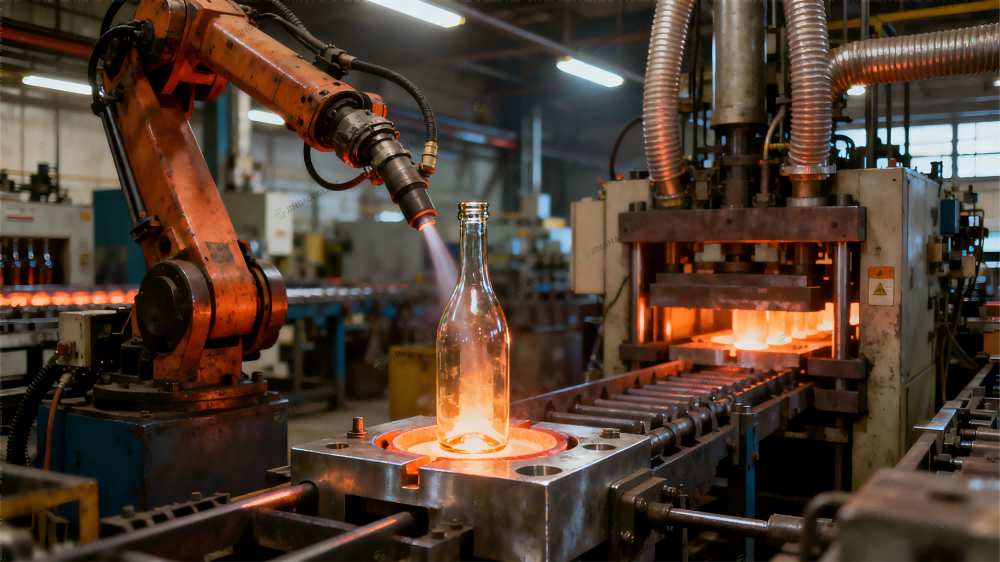In the customization of wine bottles, the shaping of the bottle body is the first crucial process. Different techniques result in a wide variety of "appearance levels" and textures of the wine bottles. Hand-blowing is a highly artistic traditional craft. Artisans hold 1.5-meter-long hollow iron tubes, dip them in molten glass from the furnace and blow it into shape. By controlling the force, frequency and time, they create wine bottles with smooth lines and unique shapes. Each wine bottle produced under this process varies slightly in thickness and weight. However, it is precisely this "imperfection" that highlights the charm of craftsmanship and is often used for customizing high-end wine bottles, forming a sharp contrast with mass-produced wine bottles.
Mechanical blowing is the choice that prioritizes efficiency. Through mechanical devices, molten glass is injected into molds, and then compressed air is used to inflate and set the shape. It can ensure the precise size and stable quality of wine bottles, with extremely high production efficiency. It is suitable for large-scale breweries and other scenarios that require large-scale customization. While meeting the massive production demands, it avoids the errors of manual production.
The mold pressing process is specially designed for regular-shaped wine bottles. Molten glass is poured into a custom mold and pressed into shape by mechanical or hydraulic pressure, which can precisely create special bottle shapes such as square and rectangular ones. Many Baijiu brands choose this process to customize square wine bottles to highlight their characteristics. Although the design is restricted by molds, it has the advantages of high dimensional accuracy and excellent production efficiency.
Rotary pressing combines the advantages of rotation and pressing. During pressing, the mold keeps rotating, and the glass liquid is evenly distributed under the action of centrifugal force. The resulting wine bottles have uniform wall thickness, higher strength, and can also form special textures on the bottle body. For instance, this technique is often used in custom champagne bottles. The texture of the bottle body not only increases the friction when holding but also enhances the aesthetic appeal, balancing practicality and appearance.

